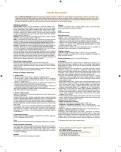-
Medical journals
- Career
Placenta accreta – case report
Authors: L. Krajíčková
Authors‘ workplace: Gynekologicko-porodnické oddělení, Oblastní nemocnice Kolín, primář MUDr. A. Toman, MBA
Published in: Ceska Gynekol 2015; 80(1): 80-82
Overview
Objective:
To draw attention to the issue of placenta accreta, which is nowadays one of the main indications for a postpartum hysterectomy.Design:
Case report.Setting:
Department of Obstetrics and Gynecology, Hospital Kolín.Case report:
We report a case of a patient that needed a hysterectomy after the elective cesarean section because of placenta accreta and risk of a life-threatening bleeding.Conclusion:
Placenta accreta is a life-threatening diagnosis, which is due to the growing number of caesarea sections becoming a serious perinatal problem. For most patients, the method of choice is elective cesarean section followed by hysterectomy. For women who wish to preserve fertility, a conservative procedure may be considered.Keywords:
placenta accreta, ultrasonography, postpartal hysterectomy, conservative treatment
Sources
1. Allahdin, S., Voight, S. Managment of placenta praevia and accreta. Obstet Gynecol, 2011, 31(1), p. 1–6.
2. Charleen Sze-yan Cheung, Ben Chong-pun Chan. The sonographic apperance and obstetric management of placenta accreta. Intern J Women´s Health, 2012(4), p. 587–594.
3. D´Antonio, F., Iacovella, C., Bhide, A. Prenatal identification of invasive placentation using ultrosound:systematic review and meta-analysis. Ultrasound Obstet Gynecol, 2013, 42, p. 509–517.
4. Doumouchtsis, SK., Arulkumaran, S. The morbidly adherent placenta: an overview of management options. Acta Obstet Gynecol Scand, 2010, 89(9), p. 1126–1133.
5. Jacques, SM., et al. Placenta accreta:mild cases diagnosed by placental examination. Int J Gynecol Pathol, 1996, 15(1), p. 28–33.
6. Kayem, G., et al. Conservative versus extirpative management in cases of placenta accreta. Obstet Gynecol, 2004, 104(3), p. 531–536.
7. Sentilhes, L., Kayem, G., Ambrosselli, C., et al. Fertility and pregnancy outcomes following conservative treatment for placenta accreta. Hum Reprod, 2010, 25, p. 2803–2810.
8. Silver, RM., Landon, MB., Rouse, DJ., et al. Maternal morbidity associated with multiple repeat cesarean deliveries. Obstet Gynecol, 2006, 107, p. 1226–1232.
9. Solheim, KN., Esakoff, TF., Little, SE., et al. The effect of cesarean delivery rates on the future incidence of placenta previa, placenta accreta, and maternal mortality. J Matern Fetal Neonatal Med, 2011, 24(11), p. 1341–1346.
10. Spong, CY., Mercer, BM., D‘alton, M., et al. Timing of indicated late-preterm and early term birth. Obstet Gynecol, 2011, 118, p. 323–333.
11. Steins Bisschop, CN., Schaap, TP., Vogelvang, TE. Invasive placentation and uterus preserving treatment modalities: a systematic review. Arch Gynecol Obstet, 2011, 284(2), p. 491–502.
12. Verner, M., Krofta, L., Feyereisl, J. Placenta accreta – diagnostika a terapie. Postgraduální medicína, 2014, 5.
13. Welsh, AW., Ellwood, D., Carter, J., et al. Opinion: integration of diagnostic and management perspectives for placenta accreta. Obstet Gynecol, 2009, 49(6), p. 578–587.
14. Wu, S., Kocherginsky, M., Hibbard, JU. Abnormal placentation: twenty-year analysis. Am J Obstet Gynecol, 2005, 192 (5), p. 1458–1461.
Labels
Paediatric gynaecology Gynaecology and obstetrics Reproduction medicine
Article was published inCzech Gynaecology

2015 Issue 1-
All articles in this issue
- HPV in etiology of orofaryngeal cancer according to sexual activity
- Vacuum-assisted vaginal delivery does not significantly contribute to the higher incidence of levator ani avulsion
- Basal cell carcinoma in a young patient
- Anterior colporrhaphy under local anesthesia
- The 2-dose schedule of HPV vaccines in young adolescents
- Fetal magnetocardiography: A promising way to diagnose fetal arrhytmia and to study fetal heart rate variability?
- Urinary incontinence induced by the antidepressants – case report
- Peripartal hemorrhage with a necessity to make a hysterectomy as a life-rescuing operation – case report
- Placenta accreta – case report
- Recurrent implantation failure and thrombophilia
- The risk factors for pelvic floor trauma following vaginal delivery
- Hyperechogenic fetal bowel as a markerof fetal cystic fibrosis
- Transurethral Injection of Polyacrylamide Hydrogel (Bulkamid®) for the Treatment of Recurrent Stress Urinary Incontinence after Failed Tape Surgery
- Eclampsia as a cause of secondary non-obstructive central sleep hypoventilation
- The 4G/4G polymorphism of the plasminogen activator inhibitor-1 (PAI-1) gene as an independent risk factor for placental insufficiency, which triggers fetal hemodynamic centralization
- Czech Gynaecology
- Journal archive
- Current issue
- Online only
- About the journal
Most read in this issue- The 4G/4G polymorphism of the plasminogen activator inhibitor-1 (PAI-1) gene as an independent risk factor for placental insufficiency, which triggers fetal hemodynamic centralization
- The risk factors for pelvic floor trauma following vaginal delivery
- Anterior colporrhaphy under local anesthesia
- Transurethral Injection of Polyacrylamide Hydrogel (Bulkamid®) for the Treatment of Recurrent Stress Urinary Incontinence after Failed Tape Surgery
Login#ADS_BOTTOM_SCRIPTS#Forgotten passwordEnter the email address that you registered with. We will send you instructions on how to set a new password.
- Career

